THIS IS A GREAT PROGRAM FOR THE P.T. TO OFFER TO WORKPLACES.
IT IS A GREAT CONSULTING PRACTICE FORMAT. Just 2 days/wk of this consulting action generates half of my clinic’s income. There have been a few years where I did not have a clinic and did only this, earning great income with no clinic overhead costs. So, what is this??
We all remember the workplace “Back School”, introduced back in the 1980’s. They worked very well to reduce workplace back injuries, especially those that were McKenzie-based. We designed a similar “risk factor education” strategy to address neck-arm CTD overuse disorders. This also worked very well.
We designed a version of Back School that encompasses a range of LBI risks beyond “lifting” (since lifting is not cause of many back injuries. LBI occurs during lifting mostly to a back that is already screwed up with degenerative changes and dysfunctions). Our version addresses the wider range of low back dysfunction risk factors… materials handling, posture risks, ergonomics, fitness-for-work, aging changes.. and a wide range of personal prevention interventions that can reverse these varied risks.
We also designed a Neck-Arm CTD School that is based NOT on repetitive motion risks, but more on Static Posture risks (far more important and fixable than repetitive motion).
We merged these into our “MSD School” addressing low back and neck-arm MSDs. THAT is what we now bring to the workplace, teaching everyone how MSDs develop and how to avoid or reverse them.
Our “MSD School” spends first hour on neck-arm risks, then the second hour on LB risks. It teaches musculoskeletal anatomy and pathomechanics of neck risks, rotator cuff risks, tennis elbow risks, golfers elbow risks, deQuervains, and CTS. Then, follows the same pattern for LB problems for facets joint, disc, ligs, muscle, SIJ risks. Prevention interventions proposed include ergonomics changes, work task rotations, sit-stand rotations, job specific micro-stretches, after work recovery stretches… all customized to the jobs being addressed. That means the PT must assess the workplace prior to MSD School in order to customize presentation, for maximum effect.
MSD School teaches workers musculoskeletal biomechanics, MSD pathomechanics, personal ergonomics tactics, posture control (the key!), and self-care microstretching.
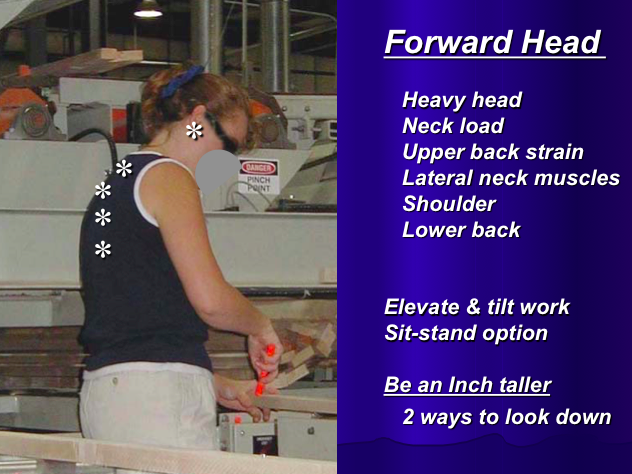 m
m
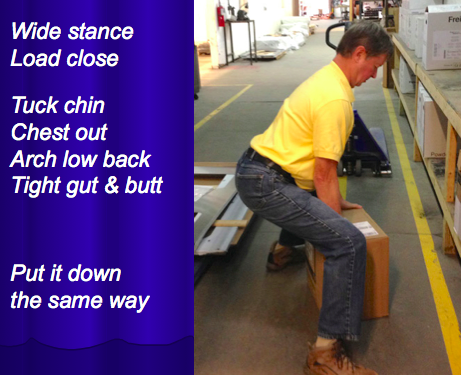 m
m
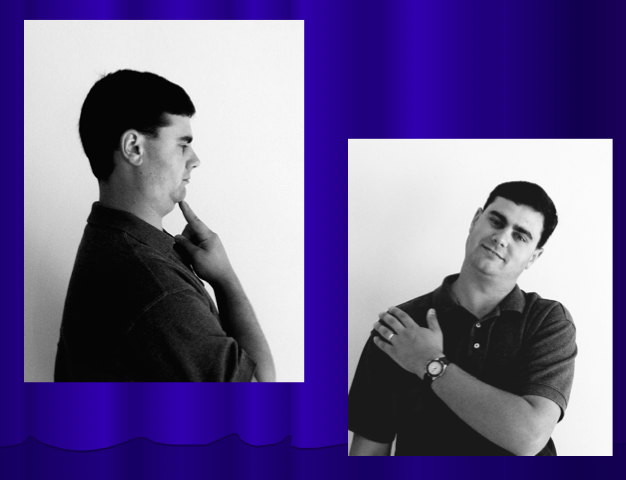
Does this work? Is it effective? We have done this at 600 workplaces since 1982, with average decrease in MSD lost work days of 72% in the year following MSD School.
One published study in APTA Ortho Section Self-study graduate course monograph (strictly peer-reviewed) “The Injured Worker: Prevention & Ergonomics” is summarized below. Yeah, this works.
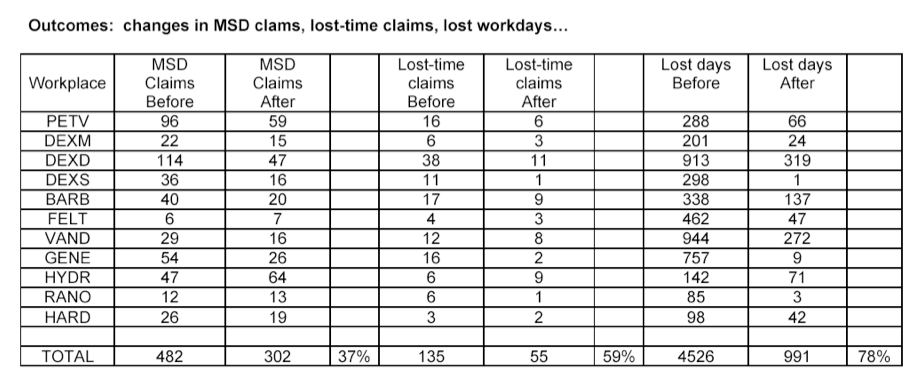
What does our MSD School look like? Here are selected portions of our presentation, first hour addressing neck-arm overuse MSD, second hour addressing low back MSD:
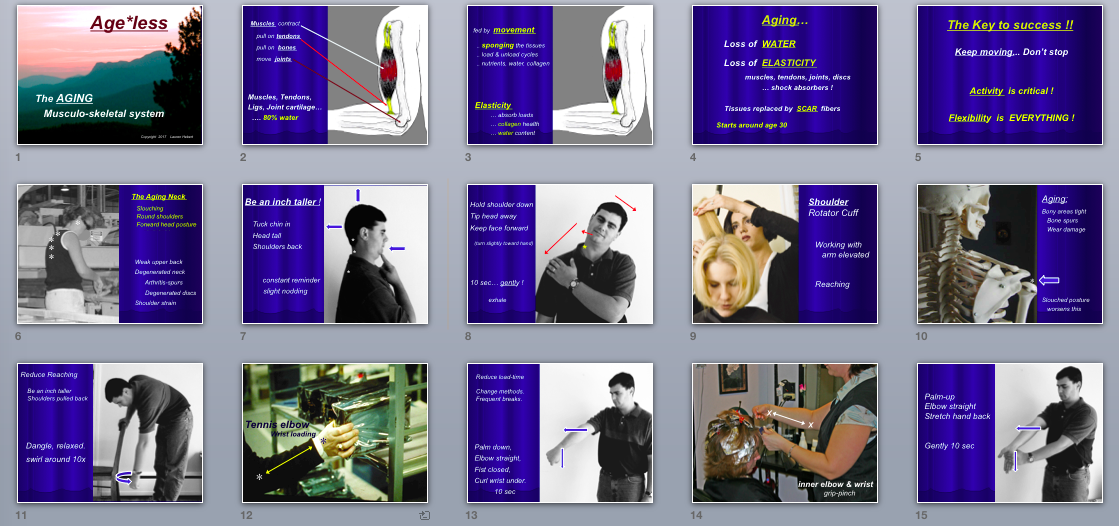
.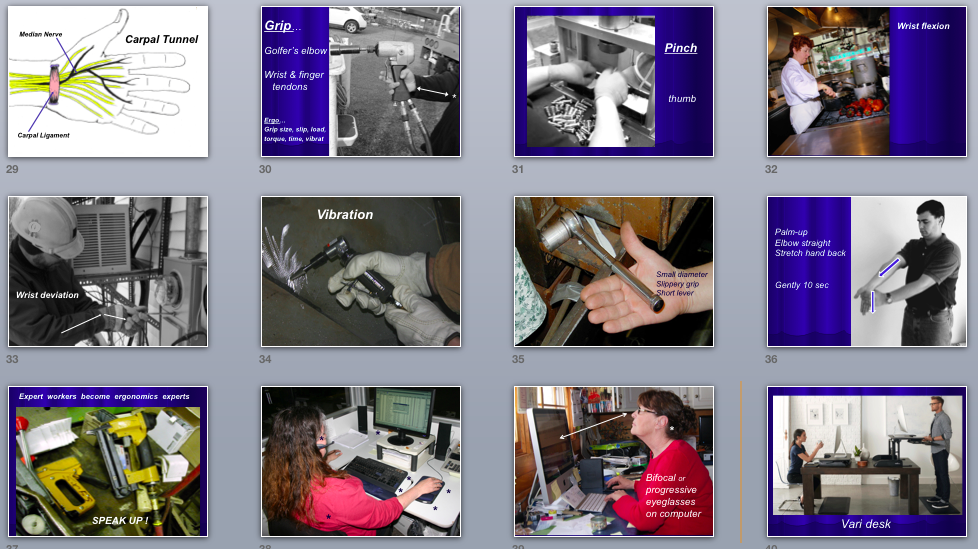
.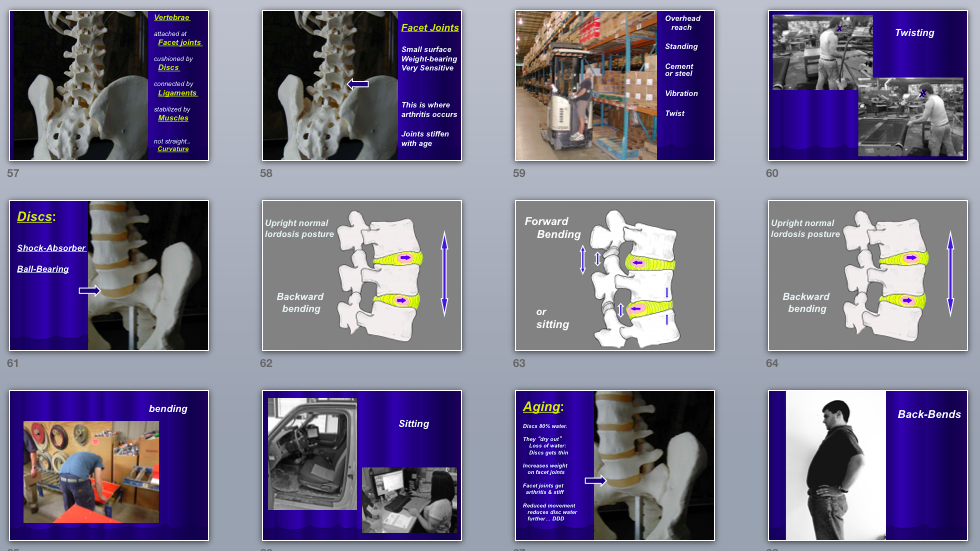
.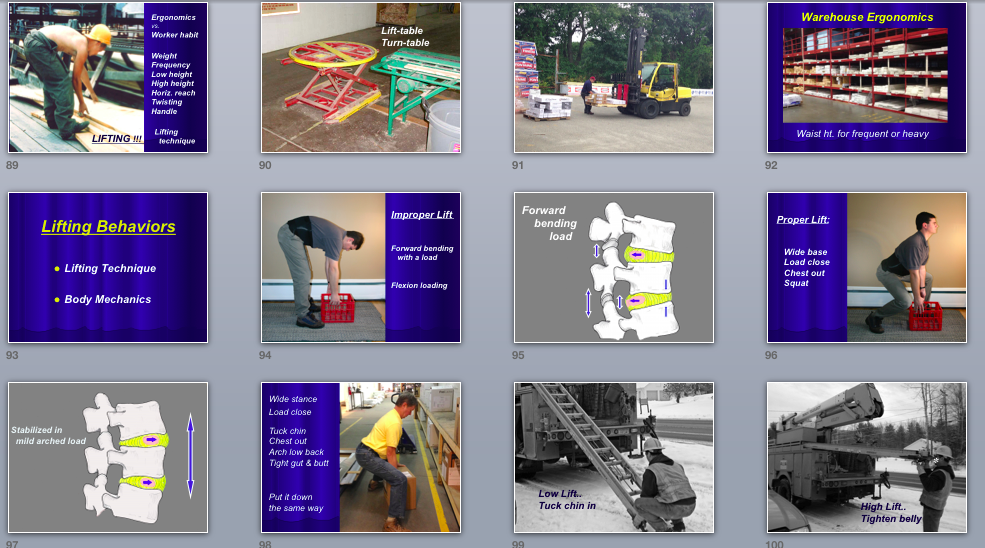
HERE IS A PDF OF ONE VERSION OF OUR MSD SCHOOL (office-computer version). computerMSDschool
Here is employee handout for our MSD School…MSDschool
DESIGN YOUR OWN PROGRAM? You can build your own presentation using a PowerPoint program… OR… you can acquire an established program, like ours, all ready to go, with a highly marketable track record of good outcomes.
OUR PREVENTION CONSULTING PRACTICE PACKAGE… a thumb drive or CD of all of our powerpoint programs, including several versions of our MSD School such as the Office Ergonomics School (big demand for this) and Aging Worker School (also big demand), plus all support documents and marketing protocols (a critical part of this package!).
Our program package is structured to allow you to customize it to match your philosophies and to address specific risks for each client workplace.
The primary advantage of using an established program like this is you can refer to its track record of outcomes, since that is the primary criterion a workplace will use in deciding whether to hire you to provide a prevention program.
Check out our Workplace Consulting “kit” that allows PTs to replicate our programs at http://www.smartcarept.com and got to page “NLT Kit” (No-Lost-Time). Or email me to receive description details
Check out how we describe our services to client workplaces. We direct potential client workplaces to preview our programs at http://www.impacc.com
Our MSD School can be customized to fit any type of workplace. We also have a version dedicated specifically to office ergonomics. This is a version many PTs use to start their consutling practice, since it is so easy to address this high-risk work setting. We also have a version dedicated to the AGING Worker (The Age*Less Program). These are all a consistent 2-hr workplace presentation.
A complete program for most client workplaces starts with a unique version of the PT doing an on-site MSD Ergo Risk Analysis, producing a written risk report for the client workplace detailing all the MSD risks for each job. This serves as the basis for customizing your MSD School to fit the client workplace.
See other posts on this blog re. setting up the Micro-Stretch program that fits their jobs, plus a post on doing an MSD-Ergonomics Risk Assessment for the client workplace as a basis for customizing their MSD School presentation.
FMI… Lhebertpt@prexar.com.
Lauren teaching an MSD School for the night shift at the mill
Seminar we do for employers in the community to preview our program.
Training an in-house ‘Ergonomics Team’ at client workplace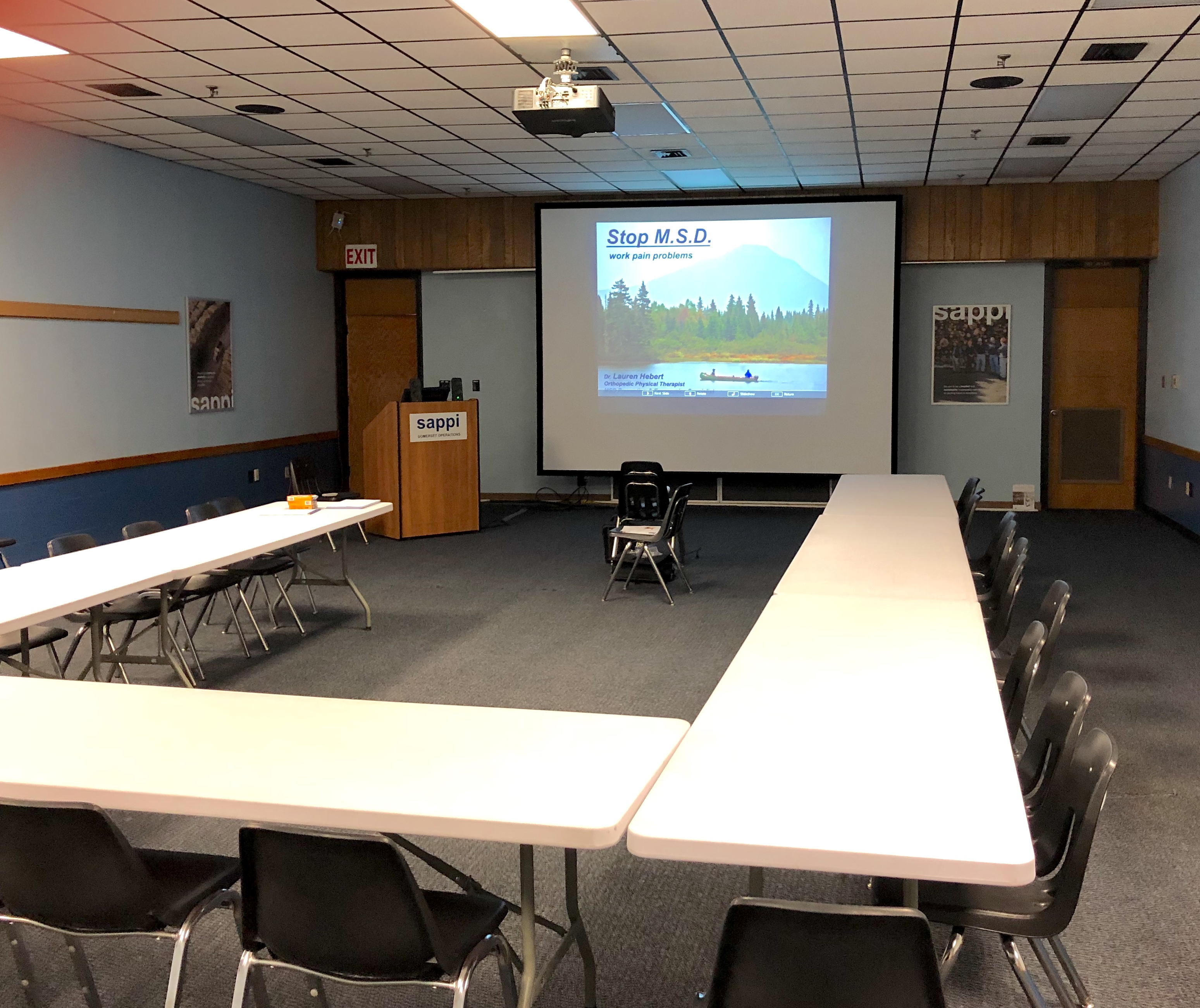
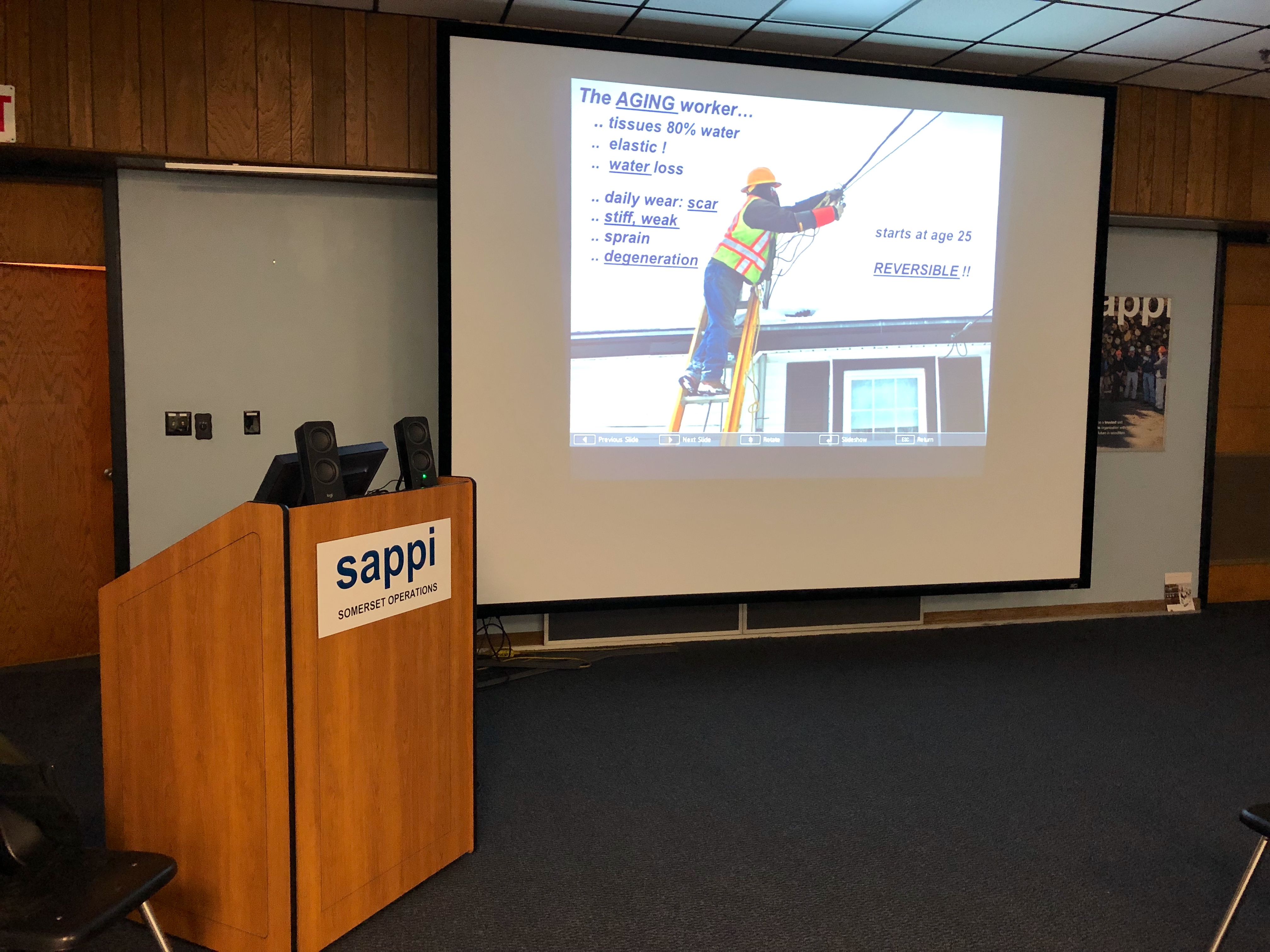

Who in a company factory has the power to hire me as a MSD prevention PT? Is it HR Dept.?
LikeLike
either the HR mgr or safety mgr, variably.
LikeLike